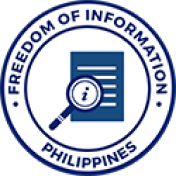

DESCRIPTION
The National Leprosy Control Program (NLCP) is a multi-agency effort to control Leprosy in the country with private and public partnership in achieving its goals to lessen the burden of the disease and its mission to have a leprosy-free country.
VISION
Leprosy-free Philippines by the year 2022
MISSION
To ensure the provision of comprehensive, integrated quality leprosy services at all levels of healthcare
OBJECTIVES
- To further reduce the disease burden and sustain provision of high-quality leprosy services for all affected communities ensuring that the principle of equity and social justice are followed
- To decrease by 50% the identified hyper endemic cities and municipalities
PROGRAM COMPONENTS
- Early diagnosis and treatment
- Integration of leprosy services
- Referral system
- Case detection and diagnosis
- Advocacy and IEC focusing on stigma discrimination and reduction
- Prevention of Deformity, self-care and rehabilitation
- Recording and reporting
- Monitoring, supervision and evaluation
PARTNER INSTITUTIONS
- World Health Organization
- Novartis Foundation
- Sasakawa Memorial Health Foundation
- Culion Foundation, Inc.
- Philippine Leprosy Mission
- Cebu Leprosy and TB Research Foundation Inc.
- Philippine Dermatological Society
- Coalition of Leprosy Advocates and Patients in the Philippines
- International Leprosy Association
POLICIES AND LAWS
- Administrative Order No. 167, s. 1965: Rules and Regulations of Leprosy Control in the Philippines
- Republic Act No. 4073: An Act further liberalizing the treatment of leprosy by amending and repealing certain sections of the revised Administrative Code
- Presidential Decree No. 384 January 30, 1974: Amending Republic Act No. 4073 entitled An Act further liberalizing the treatment of leprosy by amending and repealing certain sections of the revised Administrative Code
- Proclamation No. 467: Declaring the Last Week of February of every year as Leprosy Week
- Administrative Order No. 26 – A, s. 1997: Guidelines on Elimination of Leprosy as Public Health Problem
- Administrative Order No. 5, s. 2000: Guidelines on the integration of leprosy services in hospitals
- Department memorandum No. 79, s. 2004: Recommendations to pursue Leprosy Elimination Activities in all areas in the country
- Department Circular 366-B, s. 2003: First Leprosy Forum of the Philippine Dermatological Society on November 12, 2003
- Department Circular 254, s. 2004: Second Leprosy Forum of the Philippine Dermatological Society on November 9, 2004
STRATEGIES, ACTION POINTS AND TIMELINE
Strengthen local government ownership, coordination and partnership
- Ensuring political commitment and adequate resources for leprosy programs at all levels
- Contributing to UHC with a special focus on children, women and underserved populations including migrants and displaced people.
- Promoting partnerships with state and non-state actors and promote inter-sectoral collaboration and partnerships at the international, national and sub-national level
- Facilitating and conducting basic and operational research in all aspects of leprosy and maximize the evidence base to inform policies, strategies and activities.
- Strengthening surveillance and health information systems for program monitoring and evaluation (including geographical information systems)
Stop leprosy and its complications
- Strengthening patient education and community awareness on leprosy.
- Promoting early case detection through active case-finding (e.g. campaigns) in areas of higher endemicity and contact management.
- Ensuring prompt start and adherence to treatment, including working towards improved treatment regimens
- Improving and management of disabilities.
- Strengthening surveillance for antimicrobial resistance including laboratory network.
- Promoting innovative approaches for training, referrals and sustaining expertise in leprosy such e-Health (LEARNS)
- Promoting interventions for the prevention of infection and disease. -Chemoprophylaxis
Stop discrimination and promote inclusion
- Promoting societal inclusion through addressing all forms of discrimination and stigma
- Empowering persons affected by leprosy and strengthen their capacity to participate actively in leprosy services. -CLAP
- Involving communities in actions for improvement of leprosy services.
- Promoting coalition-building among persons affected by leprosy and encourage the integration of these coalitions and or their members with other CBOs.
- Promoting access to social and financial support services, e.g. to facilitate income generation, for persons affected by leprosy and their families.
- Supporting community-based rehabilitation for people with leprosy related disabilities
PROGRAM ACCOMPLISHMENTS/STATUS
|
Indicators
|
2017 |
|
Prevalence rate of <1 per 10,000 population |
0.4 |
|
MB/PB (new cases)
|
1660/249 |
|
Children below 15 years old & proportion
|
6.7% |
The National Leprosy Control Program in coordination with the Research Institute for Tropical Medicine (RITM) has started the National Leprosy Baseline Survey this year (2018) and expected to be completed in 2019. This will help the program in prioritizing augmentation in areas with high prevalence rate. This will also give a real picture of the country’s status in maintaining the elimination level of leprosy cases.
Continuous support has been given to all new MB and PB cases through provision of supportive drugs from the NLCP and Multidrug Therapy (MDT) from World Health Organization (WHO).
CALENDAR OF ACTIVITIES
- World Leprosy Day (Every last Sunday of January)
- Leprosy Control Week (Every 4th week of February)
- National Skin Disease Detection and Prevention Week (Every 2nd week of November)
STATISTICS
PROGRAM MANAGER CONTACT INFORMATION
Dr. Julie Mart C. Rubite
National Program Manager for Leprosy Control Program
Disease Prevention and Control Bureau
Contact No.: 651-7800 local 2354, 2350, 2354
Email Address: [email protected]
——
last updated: October 26, 2018


